Our Bad Luck with Chadar Trek: When we decided to book the flights for Ladakh in the extreme winter of January month, it just surprised everyone. Ladakh trip was one of the most-awaited trip and our timings made it a challenging one. Actually, there was no choice for us. The famous Chadar Trek (The Frozen River Trek) was possible only in that period, so there was no doubt in our mind about our timings. We were sure about that extreme adventure. We were eager to walk on the frozen sheet of ice (chadar) in that legendary trek.
We decided to go for Chadar Trek in the month of January, but the things changed rapidly a week prior to our scheduled departure. A massive landslide in Zanskar valley blocked the flow of Zanskar river, and result was the huge accumulation of water on the river bed in a confined area. The water reservoir was supposed to break its boundary without any warning. It was a great threat to the trekkers on Chadar as well as for the people in the low-lying areas. Finally, The District Authorities assessed the threat and postponed the famous Chadar Trek indefinitely.
After that news, two people from our group of five decided to cancel their bookings. Rest of us decided to move ahead as per the plan. Since Chadar Trek was not possible, we searched for the alternates and finally, decided to go for Marka Valley Trek.
However, Marka Valley was a hurriedly planned adventure. We couldn’t get enough information for the trek and ultimately, we missed the most important information regarding the permits. By the time we were asked to go back from the trekking trails, we were already inside the famous Hemis High Altitude National Park after 3 days of trekking. As instructed, we returned back because of the permit issue. However, it took another two days of trekking back to Leh City and finally, at the end, we spent total five days in the absolute wilderness of Hemis National Park. We reached upto the camping spot that is very famous for snow leopard sighting.
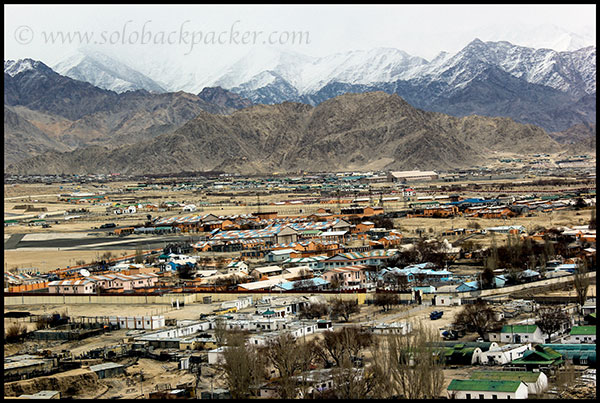
Starting of The Trek: There are many places to start Markha Valley Trek depending on the availability of time. If you have very less time (4-5 days), then you can directly go to Skiu village via Chilling by a vehicle and start trek from there. You can also start this trek from Zingchen village, that is accessible by a vehicular road. But, since we had plenty of time (almost 8-9 days), we decided to start the trek from Spituk Village, close to the Leh Airport. An all weather paved road connects Spituk Vilage to Zingchen Village, so from Spituk to Zingchen, you have to trek on a paved road basically.
Since, it is a motorable road, many people advised us to reach Zingchen by a hired vehicle and start the trek from there. But, later we realized that we took a right decision to start that trek from Spituk, otherwise, we had to return back on the first day itself from the national park due to unavailability of a valid permit.
Before starting our trek from Spituk village on the later part of the day, we wanted to do some local sightseeing in Leh city. We hired a taxi and visited Shanti Stupa and Leh Palace. Leh Palace was closed for the visitor due to the winter season. We explored the area of Moti Market to buy a small kerosene stove, that helped us a lot in the wilderness of Hemis park.

From the market, we proceed towards Spituk and made a quick visit to Spituk Monastery. After visiting the monastery, the driver dropped us near the bridge over Indus river in Spituk Village. That was the starting point of our trek. We arranged our backpack and daypacks and started moving on the road towards Zingchen. Since, it was 0300 PM already, we knew that we could not reach Zingchen by the sunset on that day.
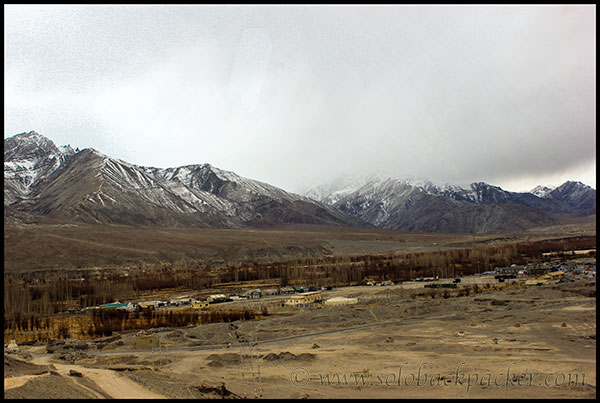
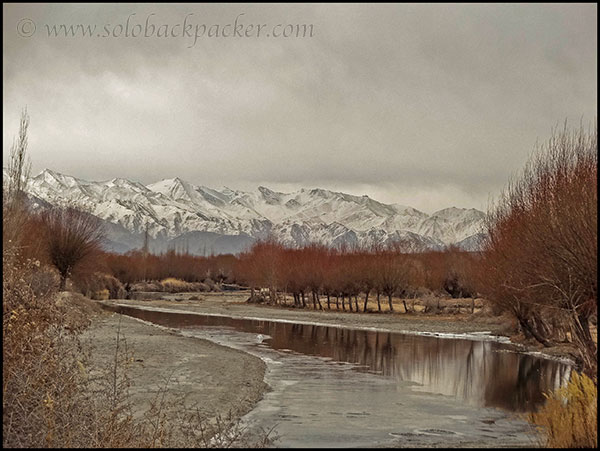
Moving on The Trekking Trail: Soon after the half mile of walking, we realized the heavy load on our back. Our backpacks were very heavy. Majority of our load share was the food items, that we brought for the entire trek duration. We did not want to leave anything behind, because there was no surety of food availability on the trail in that winter season. Without any choice, we moved ahead.
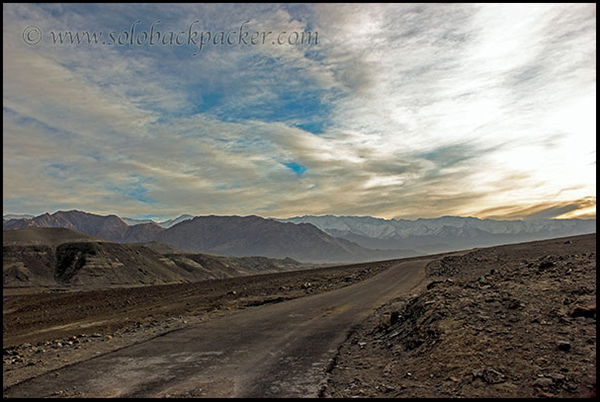
We were at super slow pace. After three hours of walking, we barely managed to walk for 3 and half kilometers. The sun was setting down in the west. We decided to pitch our tent at a suitable place, the place near a water source and also, a place that could save us from strong winds. We searched around for a water source, so that we could camp nearby, but the gorges of Indus is so deep that we could not able to reach till the river water. Lot of water was available in the partially frozen river, but every drop was inaccessible.
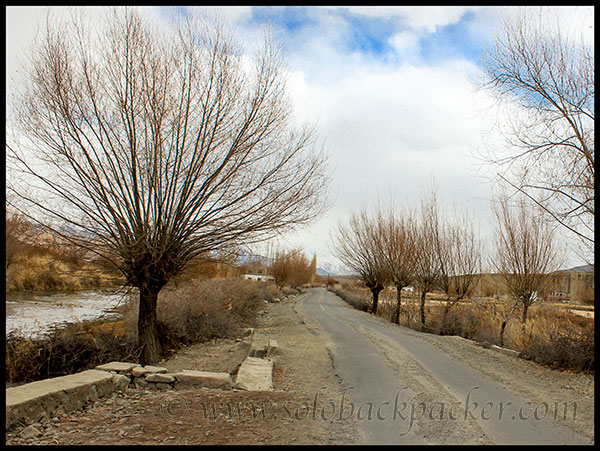
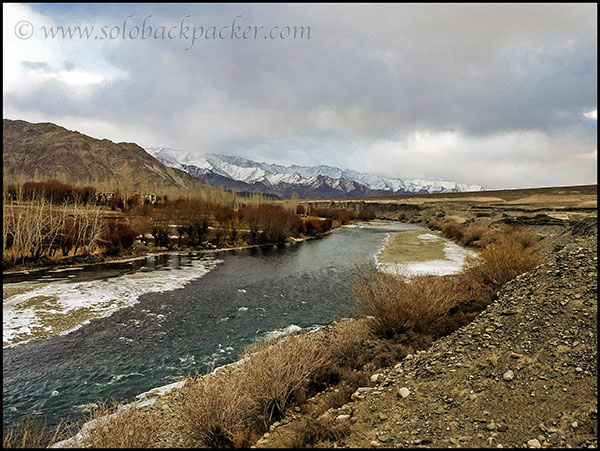
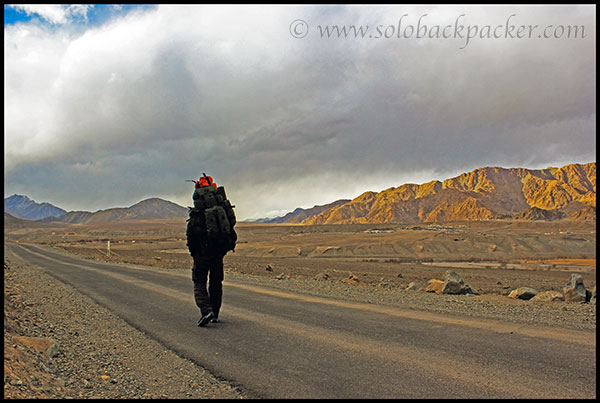
We kept moving on in the darkness. The strong wind was only making it difficult. Around 8 PM, we found a gate-like cemented structure on the road. There couldn’t be any better choice in those dark hours. We decided to pitch our tent on the edge of that road. Due to hilly terrain and isolation, the chances of any vehicular movement were very less, but still, just for precaution, we covered our tent area with big stones.
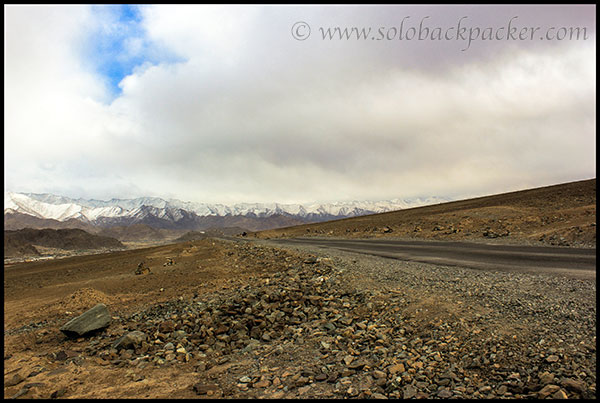
Due to strong winds and darkness, we faced a lot of difficulty to pitch the tent. Since water was not available, there was no chance of cooking at all. We consumed some biscuits and dry fruits as our meal. Just to get some warmth, I tried to lit the stove, but there was some problem with the washer. Our half an hour effort just went in vain. Without any other choice, we slipped inside the sleeping bags.
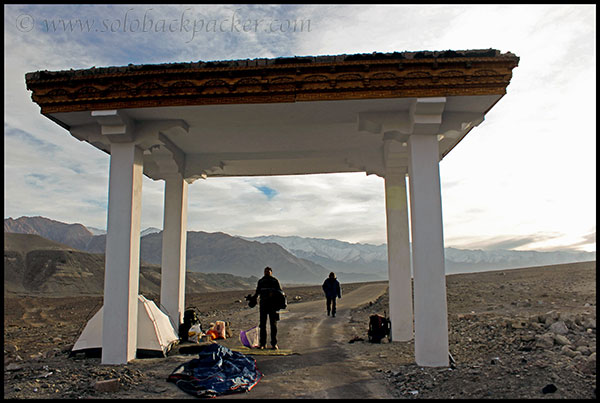
After the midnight, my feet became very cold even after wearing two layers of socks inside the sleeping bag. I could not able to sleep. I again tried to lit the stove and after some effort, it worked very well to give me some relief from the cold. My other team-mates were sleeping comfortably in their respective sleeping bags.
I was badly waiting for the sunrise and wanted to start as early as possible in the morning towards our next stop Zingchen village. But due to our laziness, we could only start at 9 o’clock. Luckily, no vehicle passed on that road till then and our tent was perfectly safe. In absence of water, we moved further without having a breakfast. We hoped to find a water source soon and kept moving. But, we managed to reach a water source only around 12 o’clock after 3 hours of continuous walking without food.
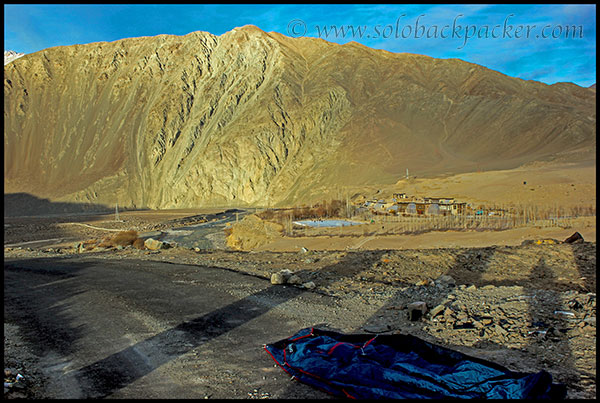
We cooked our meal and enlightened our tummy and our soul. Later, at the end of the day, we reached to a beautiful camping sight at Zingchen Village. The pictures and story of that part of the journey will be publish in the next post. Stay tuned for more.


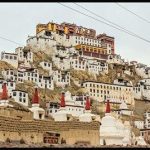
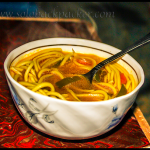
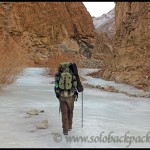
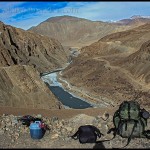
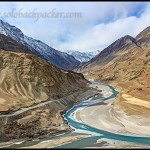
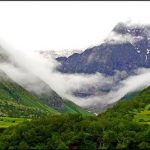
Beautiful. Planning to go there once the season starts again. Have never been there. Your post led me there.
Magnificent captures! This post well detailed about that place. I have really enjoyed. Thanks for your sharing.
Wonderful clicks 🙂 Love going through your posts. An inspiration always!
So the water here was not frozen since you used them for cooking?… or did you have to go to the fishes for water as you written inner surface stays liquid… wow… and we occational travellers carry mineral water everywhere, so a real adventure… super!!
Yes, That’s really exciting. A lifetime experience. See this picture:
There is a small hole in the completely frozen stream that supplied us the drinking water 🙂
Well, you went to some trek even if the Chadar trek was cancelled… the pictures are out of this world. I did not know you guys use water from ponds outside for cooking, it is very intriging. Why is the water not frozen in those cold temperatures. You did exploration in Leh city, pretty cool!!
Hi, The water was frozen indeed. If you were a Science student, then you should know why the fish don’t die in the winter when the lakes and rivers freeze. The same concept applies here also. Outer surface is completely frozen, but water is available below that frozen layers in liquid state. 🙂
Hi where is part 2 of this article? We want to camp in Hemis national park. Any idea if that is possible?
I am unable to write the second part as of now. Working on that. Will be publish that soon. You can camp inside Hemis National Park, just get the valid permit from Wildlife Warden, Leh.
I am planning a solo trip to hemis in dec end this year…and i was desperately looking for information. This blog is God sent. Thanx for sharing. hoping you will write part 2 soon 🙂
Meanwhile can you help me with:
1. I believe the temperatures in the night would plummet to -20 degrees C. Did you take specialized tent for this purpose? I have a basic tent that i use for camping around mumbai. wondering if that will hold good in that extreme environment.
2. Did you have a guide to show you the trek routes and how far inside did you go into hemis. Are the trekking routes easy to find without a guide?
3. Did you come across any homestays in hemis? how much do they charge apporx.
much thanx in advance.
Hi, I am still waiting to write the second part of this. Busy these days. However, regarding your questions:
1. Normal tent will not work there, if you are camping in the open spaces. We had the normal tents, but we increased the layers of clothes before sleeping. You can also consider to have a good sleeping bag, if you want to camp with the normal tents.
2. No Guide. Hemis National Park starts from the outskirts of the Leh city near Spituk Village. There is a motorable road upto Zingchen village for 5 kms, but that part of Hemis is nothing interesting, except some good views. Then its a well marked trail beyond the Zingchen village. We went upto 3 kms after Zingchen village, and then the guard turned us back, because we were there without the permit.
3. Every village inside Hemis has homestays. The flat charge including meals is Rs. 800 in almost all homestays.
thats great info. thank you so much for the prompt reply. i intend to use 4-5 layers of clothings including inner thermals. Also plan to rent a sleeping bag n mattress at leh…i believe they are easily available for hire in leh. beyond the checkpoint from where you were turned back..would the snow trail start or snow is limited to mountain tops only in winters? because in your pictures (which are lovely) i do not see as much snow as i am guessing there should be in january
Stunning pictures! http://docdivatraveller.blogspot.in/